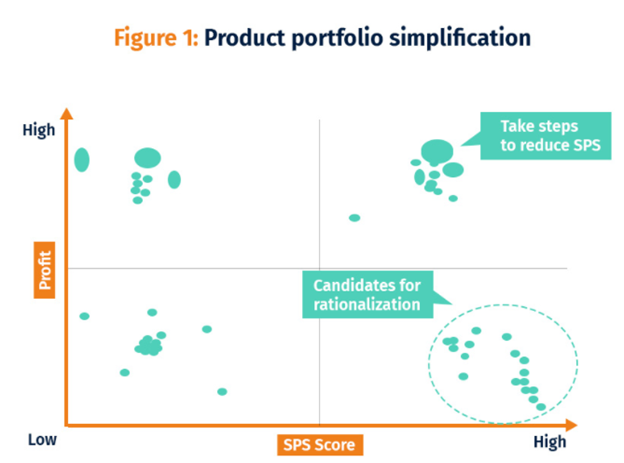The views expressed here are solely those of the author and do not necessarily represent the views of FreightWaves or its affiliates.
Shoppers across the globe will likely be greeted by empty shelves or website stock-outs during the 2021 holiday season. It’s a perfect supply chain storm of increased demand and severely constrained supply and labor. Pent-up demand from the pandemic is leading to an increase in both online and in-store orders while Covid-19-related restrictions, combined with container shortages, labor and driver shortages, port congestion and railroad bottlenecks, have constricted supply like never before.
Retailers’ inventories are near a 30-year low and toymakers are urging consumers to shop months early for holiday gifts. Shipping costs have increased by over 300% compared to January 2020. An unprecedented number of ships are waiting to dock at Southern California ports. By the end of September, 73 container ships were anchored off California, waiting for a berth. U.S. President Joseph Biden announced on Oct. 9 that the Los Angeles port will operate 24×7 to clear the backlog, but even that is not going to be enough. There is no end in sight for any of these problems.
- More than 20% of supply chain executives are planning to reduce the number of SKUs in their product portfolio but are not sure of the overall rationalization strategy
- More than 45% of supply chain executives want to multi-source materials and expand their supplier base but lack an expansion plan
- More than 40% of supply chain executives aim to maintain a higher level of inventory for critical SKUs and reduce stock-out scenarios but have no visibility.
Interestingly, CPG companies that turn to data science and analytics will have a real advantage this season and beyond. Now is the right time for companies to bring in data science to address these issues, irrespective of their data journey. In most cases, companies have a better chance to succeed if they choose the right partner to help them with data science and analytics.
Following are 5 steps CPG companies can take in the immediate short term to deal with these ongoing challenges.
1. Simplify product portfolio
CPG companies can decrease complexity within the supply chain by reducing product variations or discontinuing less profitable or high complexity SKUs. This involves 3 simple steps:
- SKU classification: Classify SKUs by stockout possibility score (SPS). SPS is calculated at an SKU/store (or warehouse) level and depends on:
- Whether the item is locally sourced or not
- Predicted suppliers’ performance (based on past performance with respect to demand)
- Suppliers’ risk score (financial, geopolitical, operational, number of suppliers)
- Current inventory levels compared to forecasted demand (days of supply)
- SKU segmentation: Segment SKUs based on profit versus the stockout possibility score. Calculate profit considering increased transportation and labor costs.
- SKU rationalization: Discontinue SKUs in the high SPS and low-profit segments. Keep an eye on the SKUs with high profit and high SPS scores, then take immediate steps to reduce the SPS score of these SKUs.

Reducing complexity can increase certainty—and sales.
2. Source raw material dynamically
Build a dynamic sourcing plan that optimizes orders over the network in each planning cycle after observing demand signals and supplier’s performance scorecard. Rather than adjusting the proportion of shipments from each supplier, this configuration allows firms to minimize costs and reduce the risk while providing timely shipping of orders.
3. Optimize pricing to shape demand
During times of supply disruption, channels can adjust pricing to curb demand while maintaining/gaining revenue. There are three options for making an impact by optimizing pricing:

When there are supply constraints, a CPG may utilize one or a combination of the three to impact the market. In the case of long-term supply disruption, raising list costs is a must. With EDV pricing, you must factor in channel coherency, price gaps compared to the key competition, brand role within the category, retailer price guidelines and their impact on consumer demand. In addition, CPGs should look for ways to shift consumer demand from the most impacted products to the least impacted products within their category portfolio. For short-term challenges, the quickest action a CPG can take is to adjust upcoming promotional plans to curb high volume demand. There is a risk that households will switch their spending to competitive brands; however, this risk is reduced during supply-chain issues since it is typically an industry-wide problem.
4. Adopt out-of-stock and on-shelf availability alerts
An automated alert system can pre-empt out of stocks based on real inventory levels (after accounting for phantom inventory) and expected sell-out trends in the upcoming days and weeks. Organizations should increase POs well in advance based on these alerts, so stock is replenished before inventory runs out. Machine learning can raise alerts for misplaced, damaged and/or phantom inventory within stores and include a mechanism to alert the store task force directly.
5. Build a smart allocation strategy
Finally, savvy organizations should distribute inventory in distribution centers and fulfillment centers based on trends, which can be gauged through an accurate and precise demand-sensing exercise done at the SKU level. Allocate higher inventory in the hot spots or high-demand clusters and maintain healthy stock levels elsewhere.
Accelerator-based machine learning solutions can help CPG companies take these steps and more, saving time, money and energy. Machine learning algorithms working together with employees can help companies across the globe navigate ongoing supply chain challenges while delighting their customers, treating their employees well and delivering on their promises.
About the authors
Chris Gaffney is a former vice president at The Coca-Cola Company and a noted supply chain leader.
Majaz Mohammed is the director of supply chain and manufacturing at Tredence. Shubhankit Verma is a senior manager of supply chain practice at Tredence. Tredence is a big data analytics company based in San Jose, California.







